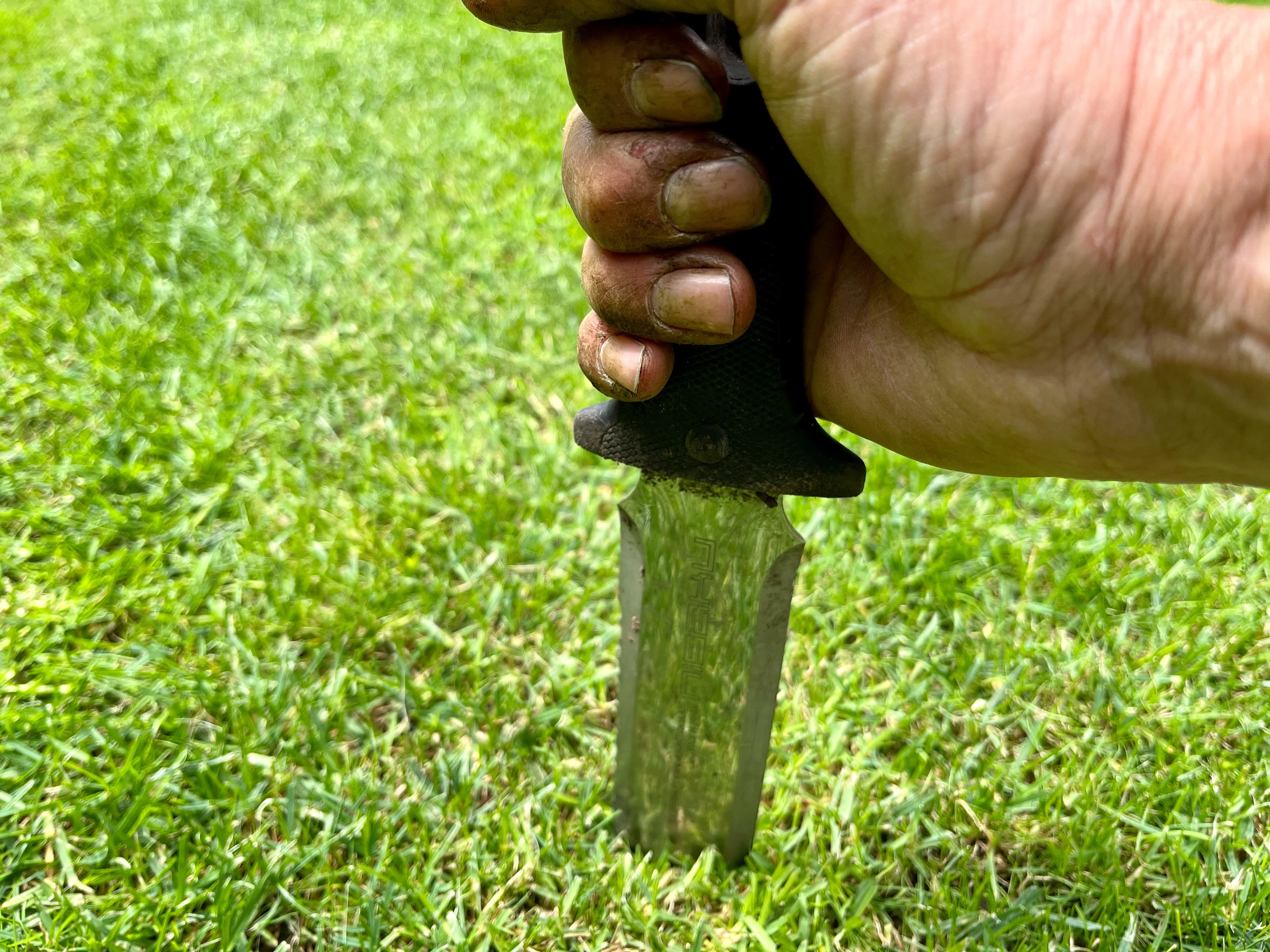String theory

Our orchard lawn at Genus HQ is a wonderful matrix of all sorts of grasses and wildflowers including clover, dandelion, speedwell, and cowslips. In contrast we like to keep the grass in the flower garden as a traditional lawn; one that is moss free and striped to perfection.
After having it relaid just after Christmas, we started to notice that the fine turf we’d paid for was being populated by a coarser species known as annual meadow grass. Slightly paler in colour, a one month old specimen is capable of setting seed every ten days and can soon overrun a fine lawn, swamping the finer grass species by out-competing them. It’s a big problem in the lawn-turf industry where a chemical previously used to control it has now been removed from the market. Luckily we spotted the problem fairly early and set about dealing with it in the recommended manner.
Setting out strings over the lawn, one metre apart, we worked our way along the rows slashing the roots of the infiltrator with our trusty hori-hori knife every time we spotted an offending clump. We need to repeat this on a regular basis, the theory being that the process should eventually kill off the individual plants. Raking the lawn with a spring tine rake to lift the seed heads, followed by mowing on the lowest cut is also a way of preventing its spread. After several weeks of this regime we are starting to see an improvement - we think. It may be wishful thinking but we’ll keep you up to date with the results.







